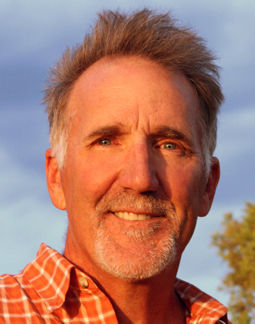Some information may be outdated.
“Obamacare is finished. It’s dead. It’s gone …You shouldn’t even mention it. It’s gone. There is no such thing as Obamacare anymore,” said President Trump, referring to his latest executive order canceling cost-sharing reduction payments to the insurance companies.
Not so fast, Mr. President. Despite an advertising budget slashed by 90 percent – Health and Human Services is actually using funds meant to promote the ACA in order to attack it – the Affordable Care Act, aka Obamacare, remains alive and kicking here in Grand County – for the most part.
While the time to enroll in 2018 health insurance plans has been cut in half – it now runs Nov. 1 to Dec.15 – the subsidies and cost-sharing reductions remain intact and our two insurance carriers remain committed to Grand County. Most people with individual policies purchased on the Health Insurance Marketplace will see little change.
Not to say that things have not become more complicated. While Trump has canceled the cost-sharing reduction (CSR) payments, which lower the out-of-pocket costs for lower income earners, the insurance companies are still obligated to provide these discounts to qualified customers (those who make between 100 percent to 250 percent of the federal poverty level). The Utah Insurance Commissioner had the foresight to require Utah insurance carriers to price their 2018 plans in anticipation of Trump’s reneging on CSR payments. Consequently, 2018 premiums took a huge jump, up to 57 percent on Silver plans.
Yet subsidies, which are based on the second-lowest priced Silver plan in our rating area, have also gone up by the same amount. Consequently, anyone who earns up to 400 percent of the federal poverty level ($48,240 for an individual, $81,680 for a family of three) will see little change in the price or benefit structure of their 2018 health insurance policies. What it does mean is that the federal government must pay out these higher subsidy amounts. This is a classic case of acting tough, then shooting yourself in the foot. Trump may have saved $7 to $9 billion in CSR payments, but the federal government will end up paying out $12.3 billion in higher subsidies. It doesn’t take a Wharton graduate to do the math.
Unfortunately, those who earn over 400 percent of the federal poverty level lack subsidies to shield them from these premium rate hikes, and are the most vulnerable in this topsy-turvy market. SelectHealth and UUHP had the prudence to design three health insurance plans – two Silver and one Bronze – that are only offered off the Health Insurance Marketplace, and hence are priced around 20 percent lower than similar offerings on the marketplace.
This points to the biggest problem we face here in Grand County: the limited choice we have in choosing our health insurance. Regence Blue Cross Blue Shield is shutting down its individual health insurance business in Grand County for 2018. (It will continue its employer-sponsored insurance and older grandfathered individual policies). Its reasoning? “We are focusing our network on those providers and hospitals who share our vision and are close partners. Unfortunately, in those 17 counties, we do not have strong provider relationships and are removing them from the network.”
If you thought being a “nonprofit” health insurance company entails a certain social obligation not to abandon an area of the state it operates in because it “(doesn’t) share our vision,” you’d be wrong.
And this is why it matters. With the exit of Regence from the individual marketplace, there is no longer any insurance company with nationwide coverage offering an individual policy in Grand County in 2018 – either on or off the marketplace. If you want to go to Sloane-Kettering or MD Anderson or the Mayo Clinic, forget about it. Want a second opinion from that renowned specialist in Seattle? You’ll have to pay for that out of your own wallet. And for a Moab resident whose life may depend on a promising clinical trial offered out-of-state, there are not words to describe the helplessness of his situation.
Meanwhile, Trump’s approach is to take a one-man wrecking ball to the Affordable Care Act. His strategy, as stated by Steve Bannon, is to intentionally “blow those exchanges up.” creating the kind of instability that insurance companies flee from. (And there is nothing more risk-averse than an insurance company.) The former CEO of Molina, a health insurance company which just withdrew from the Utah market, said, “Most of the instability driving up premiums in the marketplace can be directly traced to Republicans’ efforts to undermine the healthcare law for their own political purposes.”
In order to stabilize the health insurance market, it will take the kind of reasoned bilateral conversations currently taking place in the Senate HELP Committee (Health, Education, Labor and Pensions). Unfortunately, the window for action is closing fast, and their work has been eclipsed by the self-defeating sabotage currently under way.
The Health Insurance Marketplace is poised to open for 2018 enrollment and renewals amid plenty of doubt and uncertainty, but it’s not enough to keep the Affordable Care Act from trudging into 2018 largely intact.
Charlie Kulander is an insurance broker in Moab.
Appreciate the coverage? Help keep local news alive.
Chip in to support the Moab Sun News.



